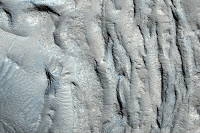1. Currently instruments are being developed that can determine which rock and soil samples are the most scientifically interesting. These samples will probably be selected by using some sort of electronic imaging system (to look at rock features) and spectroscopy (to analyze the rock’s chemical composition).
2. Instruments have been designed to drill that are more preserved then the ones on the surface. The rock collected must be small enough to be brought back but large enough to display texture and structure.
3. To make sure that the sampling system does not contaminate the sample with anything brought from Earth the apparatus must be thoroughly cleaned before launched.
4. Developing a way to weld metal to form clean airtight seals are needed to protect the samples. The rover will seal the sample in a capsule to prevent contamination from the Earth’s atmosphere or biosphere upon landing on Earth.
5. A Mars Ascent Vehicle will launch the capsule off Mars.






